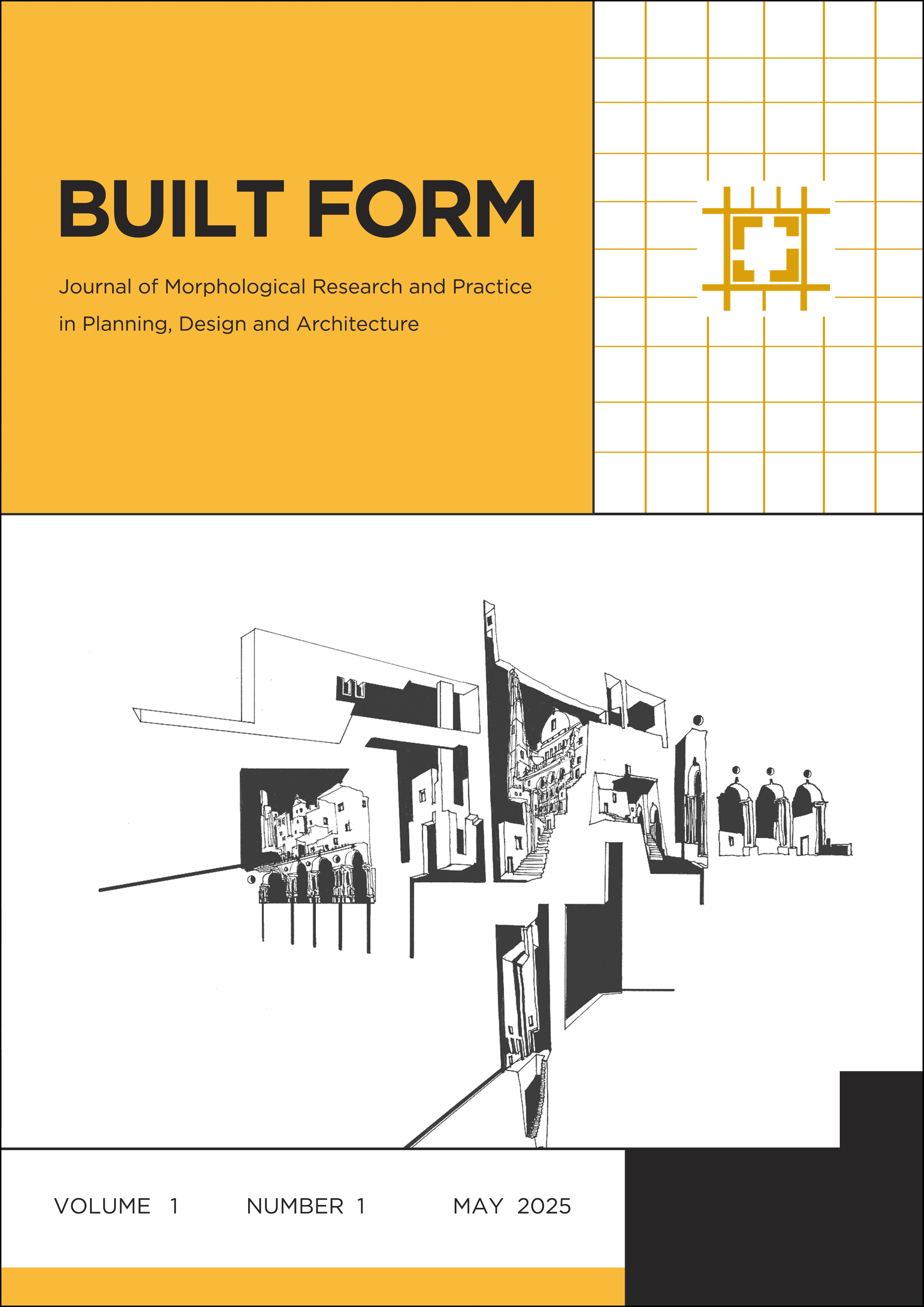Artificial Intelligence and City-Making: The Potential for New Synthesis
DOI:
https://doi.org/10.63955/BuiltForm.06Keywords:
artificial intelligence, urban regeneration, urban morphology, urban acupuncture, space syntaxAbstract
Since urban morphology was first established as theories and methods in the 1950s and 1960s, architects and planners have sought to apply it to urban regeneration. The Italian school of urban morphology led Aldo Rossi to develop a typological approach to city-making in the late 1960s. Giancarlo De Carlo built on urban morphology’s methods of analysis and sought to the community participation it called for in his work in the 1970s through the 1990s. De Carlo, a founder of Team X, hoped to use urban morphology to transform urban regeneration, demonstrating this possibility in projects at Urbino and Genoa, and establishing the International Laboratory of Architecture and Urban Design (ILAUD) as a vehicle for making this happen. Despite these efforts, urban morphology proved difficult to apply in the real world of urban regeneration. In the 1990s, Space Syntax emerged as an offshoot of the British school of urban morphology, focusing on urban analyses of cities that could be carried out using data analytics. In 2003 and 20l5, respectively, urban acupuncture and tactical urbanism were put forward as ways to simplify urban morphology’s methods and focus on interventions at different scales as the medium of its application. Today, artificial intelligence (AI) has the potential to make urban morphology actionable and transform urban regeneration, as De Carlo hoped. This article reviews this history and offers a prognosis.
References
Brown, JS., & Duguid, P (2022). The social life of information. Harvard Business. (Originally published in 2000.)
Charitonidou, M (2021). Revisiting Giancarlo De Carlo's participatory design approach: From the representation of designers to the representation of users. Heritage, 4, 985-996.
Cugurullo, F., Caprotti, F., Cook, M., Karvonen, A., McGuirk, P., & Marvin, S. (Eds.). (2024). Artificial intelligence and the city: Urbanistic perspectives on AI. Routledge.
De Carlo, G (1991). Reading and design of the physical environment. ILAUD.
Froy, F. (2025). Rebuilding urban complexity. Routledge.
Hillier, B. (2009). Spatial sustainability in cities. In Koch, Marcus, L, & Steen, J, ed’s. Proceedings of the 7th international space syntax symposium. KTH.
Lerner, J (2014). Urban acupuncture. Island Press. (Originally published in 2003.)
Lydon, M & Garcia, A (2015). Tactical urbanism. Island Press.
Mollick, E (2024). Co-intelligence: Living and working with AI. Penguin Random House.
Moucheront, N (2018, June). Giancarlo de Carlo à Urbino avant et après 1968 [Lecture presentation].
Moudon, AV (1997). Urban morphology as an emerging interdisciplinary field. Urban Morphology, 1, 9-10.
Protzen, J-P, & Harris, DJ (2010). The universe of design: Horst Rittel's theories of design and planning. Routledge.
Rossi, A (1984). The Architecture of the City. MIT. (Originally published in 1966.)
Downloads
Published
How to Cite
Issue
Section
License
Copyright (c) 2025 Elham K. Hassani, Rockne S. Hanish, John J. Parman

This work is licensed under a Creative Commons Attribution 4.0 International License.


